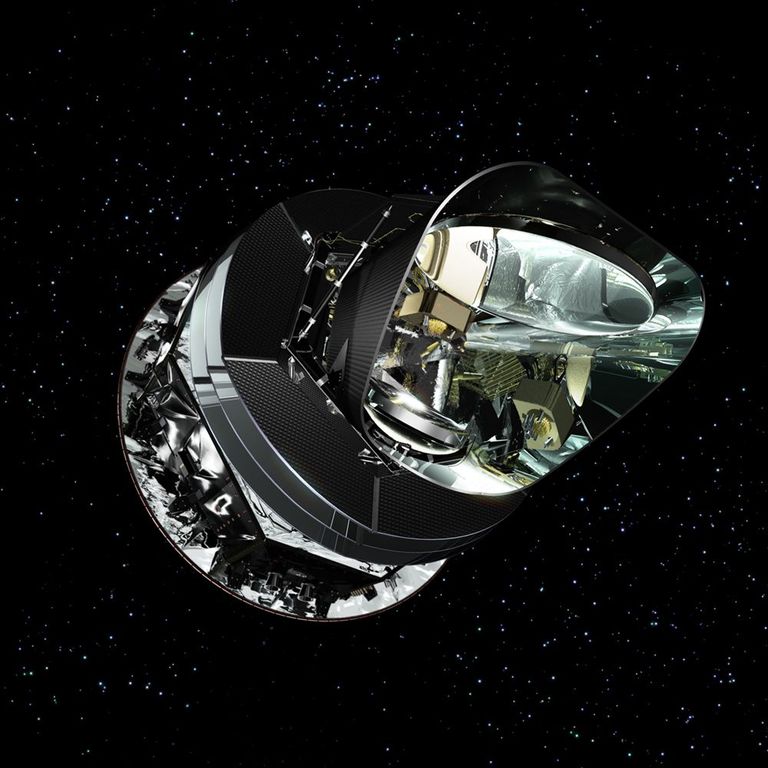Radio astronomy and millimeter astronomy
Es folgen zwei Beispiele von Beobachtungsmissionen mit Schweizer Beteiligung im Radio- und im Millimeterbereich.

Square-Kilometer-Array-Observatorium (SKAO)
Das SKAO wird das grösste Radioteleskop der Welt sein und aus Antennen in Australien und Südafrika bestehen. Der Bau begann 2021. Der Name stammt daher, dass die Antennen insegesamt eine Oberfläche von einem Quadratkilometer Fläche einnehmen werden. Mit dem dem SKAO wollen Forschende unter anderem Informationen gewinnen, wie das Universum entstanden ist, Einsteins Allgemeine Relativitätstheorie prüfen und herausfinden, wie Leben auf der Erde entstanden ist und ob es irgendwo im Universum Anzeichen einer "extraterrestrischen Intelligenz" - als Leben ausserhalb der Erde - gibt.
Die 197 Teleksope in Südafrika sind klassische Parabolantennen und detektieren Strahlen im Bereich von 2 Zentimern bis 0.8 Metern Wellenlänge oder einer Frequenz von 350MHz - 15.4 GHz. Sie werden SKA-Mid - im mittleren Frequenzbereich - genannt.
Die 131'072 Teleskope in Australien sehen ein bisschen aus wie Bäume und arbeiten im Bereich von 0.8 bis 6 Metern Wellenlänge oder einer Frequenz von 50MHz - 350 MHz). Sie werden SKA-Low - im tiefen Frequenzbereich - genannt.
Die SKAO ist selbst eine zwischenstaatliche Organisation, die sich wie die ESO der astronomischen Forschung widmet. Teil der SKAO sind: Australien, Kanada, Frankreich, Deutschland, Indien, Japan, Italien, die Niederlanden, Portugal, Südafrika, Südkorea, Spanien, Schweden, die Schweiz und Grossbritannien stehen hinter dem Projekt.

Planck-Teleskop
Das Planck-Teleskop, eine Weltraummissione der ESA, war zwischen 2009 und 2013 auf einer Erdumlaufbahn in Betrieb. Seine Instrumente konnten Strahlung im Bereich 30 GHz bis 859 GHz detektieren. Das entspricht Wellenlängen zwischen 10 Millimetern und 0.35 Millimetern.
Planck hat die kosmische Hintergrundstrahlung in verschiedenen Wellenlängen aufgezeichnet. Damit konnten Forschende Alter, Geometrie und Zusammensetzung des Weltalles besser verstehen. Zum Beispiel haben sie die Anteile an «normaler» Materie, Dunkler Materie und Dunkler Energie im Universum neu berechnet.

